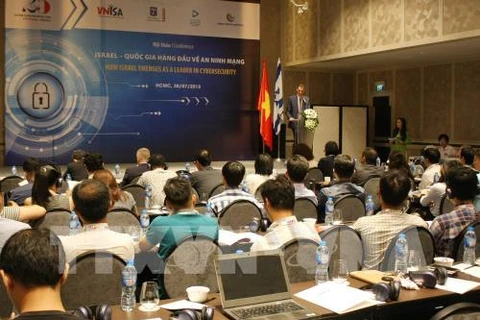Can Tho (VNA) – A workshop took place in the Mekong Delta city of Can Tho on August 23 to discuss ways to ensure cyber security is maintained for governmental organisations.
The event was co-held by the Authority of Information Security (AIS) and the municipal Department of Information and Communications to provide governmental agencies with guidelines on how to assess levels of information security, monitor threats, and find solutions to improve malware prevention and protect e-Government databases.
According to Director of the Can Tho Department of Information and Communications Do Hoang Trung, the number of cases of malware penetrating computer systems and causing data destruction in Vietnam rose by 8 percent year-on-year during the first eight months of 2018.
Most cities and provinces nationwide are building e-Government systems based on advances in information technology, said AIS Director Nguyen Thanh Hai. It brings many benefits but, at the same time, its side effects can be very serious if cyber security is not ensured, he noted.
The consequences would be devastating if personal information or accounts of bank users are stolen, or if the documents of a provincial People’s Committee are changed, Hai warned. Therefore, the development of e-Government systems should be parallel with activities to ensure system security, which must involve not only the management of IT specialists, but also improving the IT knowledge of governmental staff.
Nguyen Huu Nguyen from the Vietnam Computer Emergency Response Team suggested that governmental organisations ensure cyber security is maintained by enhancing management in five key areas – namely general policies for administrators and users, human resources, the design and development of an information system before it is put into use, operation management, and risk assessment and management.
The VNCERT reported that last year, Vietnam was hit by 13,382 cyber attacks, including 6,400 malware; 4,377 deface; and 2,605 phishing attacks. As many as 5,179 cyber attacks have been recorded since the beginning of 2018, consisting of 1,122 phishing; 3,200 deface; and 857 malware attacks.–VNA
























